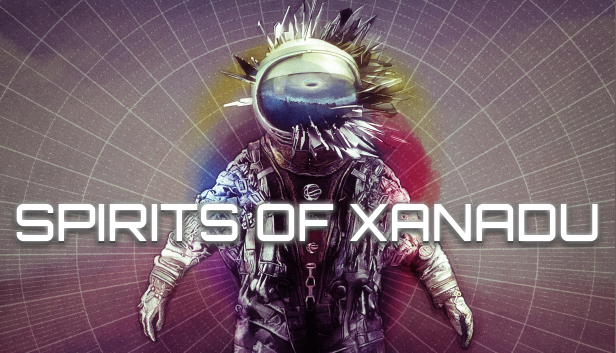
In previous reviews I’ve discussed what I feel are the major issues affecting two game genres; horror (Neverending Nightmares - http://www.bitlanders.com/blogs/neverending-nightmares-welcome-to-my-nightmare-i-think-youre-gonna-like-it/3275785) and first-person exploration (The Old City: Leviathan - http://www.bitlanders.com/blogs/the-old-city-leviathan-pretentious-prosaic-post-apocalyptic-fiction/3270423). I bring this up because Spirits of Xanadu suffers from a large number of the flaws I feel plague both genres. A spiritual successor to developer Allen Trivette’s previous work Good Morning, Commander, Spirits of Xanadu made a considerable effort to deliver a chilling, immersive journey into the deepest reaches of space, yet ended up falling into a number of pitfalls. It’s quite a shame because buried underneath these issues is an intriguing tale of madness and the unknown.
Taking place in an alternate 1983, a representative of the Extrasolar Research Association has been sent to investigate the Xanadu research vessel following a loss of communications. After several months of travel this unknown individual finally docks at the ship, which is orbiting a mysterious planet. Once on board the Xanadu it becomes obvious that something much worse than a simple technical failure is the reason contact was lost. None of the crew members can be found and the maintenance robots have gone haywire, attacking any human they see. As the ERA employee fights to survive against the killer machines they discover records left by the crew detailing a descent into insanity which appears to be connected to a mysterious artifact recovered from the planet below.
The premise isn’t the most original, having been seen before in media like Event Horizon and Dead Space, but it’s not a complete copy of those previous examples. The nature of the artifact (a massive black orb the size of an average person) is never explained – there’s no mention of the race that made it, how long it’s existed, or even how it exerts its power. All that players know is that once it was shattered it warped the crew’s minds very quickly. Audio logs left by the ship’s staff provide a glimpse into how they succumbed to its influence – Solomon Agnew breaking down quickly, Cornell Jones becoming murderous and suffering delusions that he had become a herald of the artifact, and Captain Lucy Zhao struggling to maintain her composure as everything around her goes to hell.
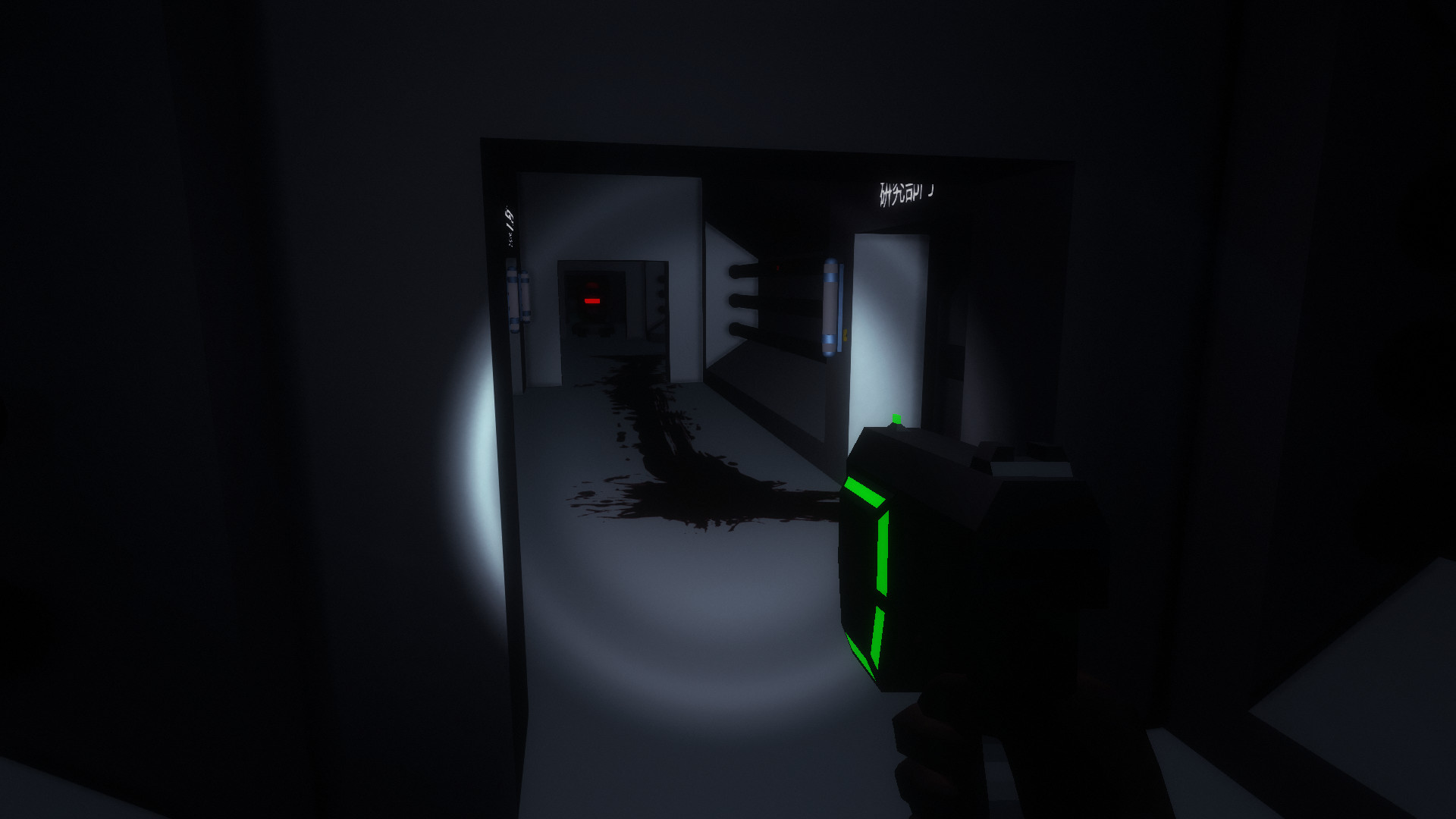
It’s a shame that the game’s presentation never conveys the mental anguish as powerfully as it did in the audio logs. While it’s clear from the outset that players have also become infected by the artifact’s power, it never manifests as anything other than standard flickering visions that rapidly appear and disappear, distorted vision, a rather ominous message written in binary on a monitor, and a ringing in the ear that suggests tinnitus more than a slipping hold on reality. As I said in my critique of The Old City, hallucinations are not enough to imply a character has gone insane. If the layout of the ship gradually changed, if the player heard voices telling them to do horrendous things, even encountering one of the surviving crew members as a broken shell would have made a much stronger impact.
Spirits of Xanadu is an homage to classic sci-fi fiction of the past and isn’t subtle about making references to the media that inspired it. The ship’s design and claustrophobic atmosphere are heavily reminiscent of the System Shock series. The Xanadu is orbiting a planet dubbed Demhe, named after a lake in Robert Chambers’ The King in Yellow, which centers around a play that drives all who read it to madness. Scattered amongst the various collectible pages are an original story about Harun Al-Din, the “Prince of Automata” which appears to be derived both from the Arabian Nights and tales from Lovecraft’s Necronomicon he attributed to Abdul Alhazred. It’s a fascinating read and I wanted to seek out all the pages just to get the whole story, though it was very on the nose concerning its parallels to the events of the game.
Stanley Kubrick’s works appear to have the greatest influence on the game. There are the obvious parallels to 2001: A Space Odyssey with the strange alien artifact and a malevolent computer system trying to wipe out everyone on the vessel. I also found a number of references to The Shining, including a document on Johns’ personal computer that was just the same four words repeated over and over, mentions of a fictional sequel to the movie titled Overlook, even an achievement called “You’ve always been the caretaker…” Johns’ calm, detached ramblings in which he discusses how he casually murdered Agnew and is ready to “shed his humanity” even make him come off as a less maniacal Jack Torrance. It’s only fitting that given the game’s themes of insanity, Trivette and Williams would pay homage to the Kubrick film that best approached the subject.
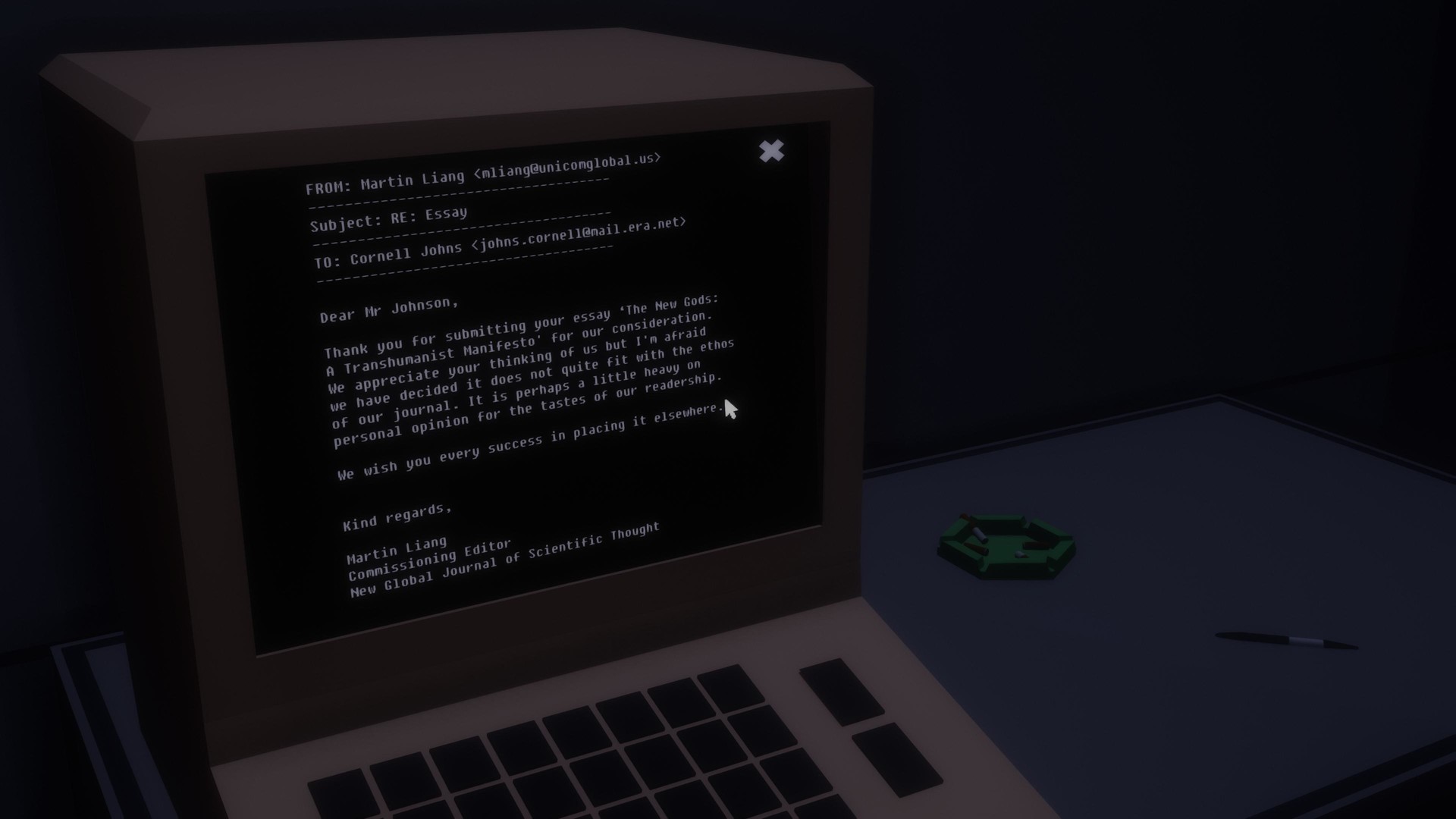
What most hurts the game’s attempt to create a frightening tone is the bizarre decision to include combat. There are three difficulty settings in Xanadu. The easiest, Peaceful, allows players to explore the ship without fear of being assaulted by robots unless they’re provoked. On the Normal and Hard settings the machines will attack on sight, and they are relentless. Potential robot onslaughts lack any real terror though because of their designs – they aren’t scary, they look like they were taken from an early 60s sci-fi movie.
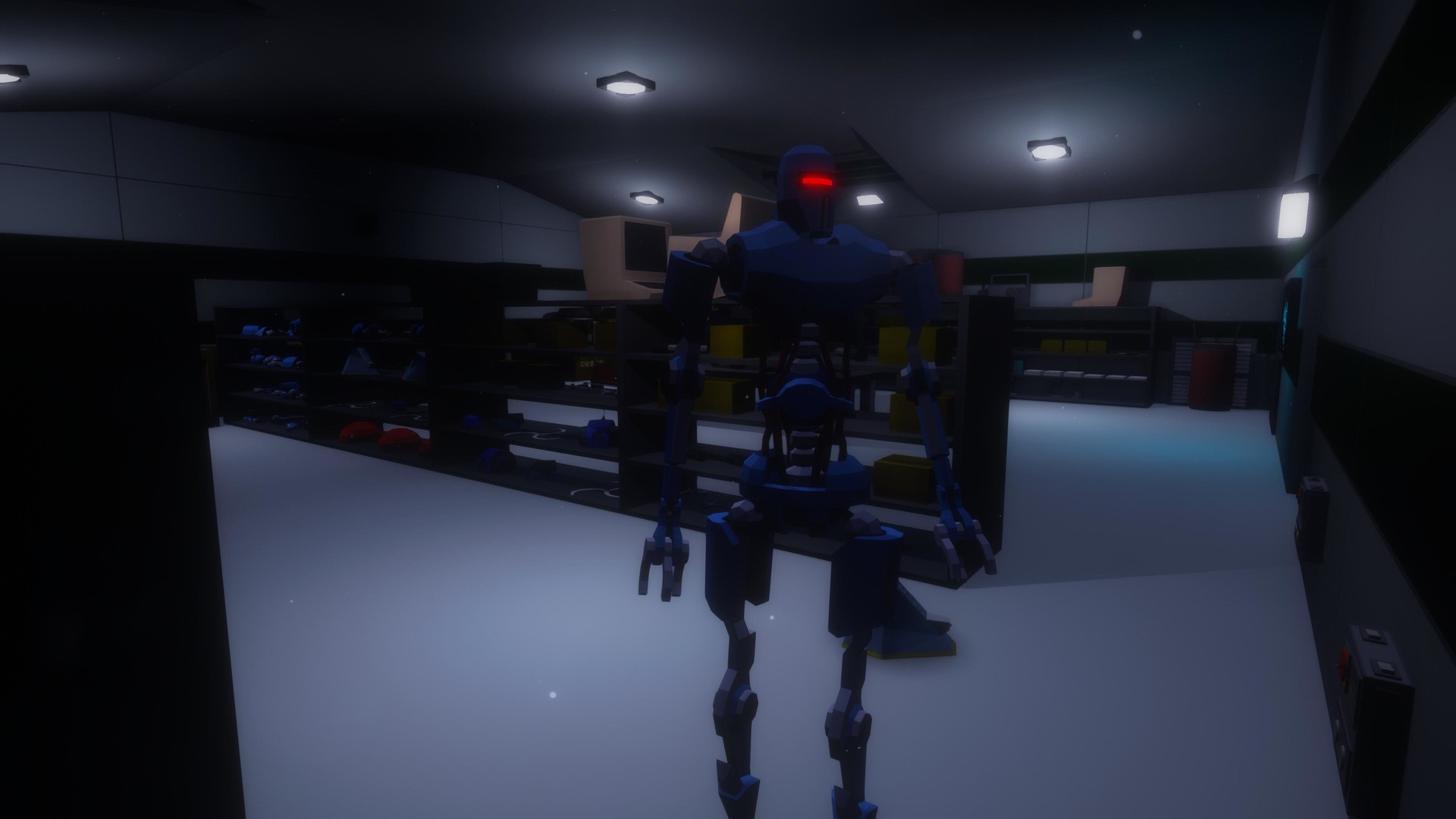
Encounters with the robots lead to frustration rather than fear. When players are killed they end up in the ship’s brig, but they can easily walk out as the window to their cell has been broken. However, the player then has to backtrack to where they were before getting killed in order to resume their task or get the collectible they were after, which means going through robot-infested corridors once again. Adding to this problem – the robots respawn indefinitely. This becomes incredibly annoying when it’s the flying bots that continue to attack since they flit about incredibly quickly, making it difficult to get a bead on them. I found the best way to deal with them was to take potshots from a distance. There are three weapons scattered around the Xanadu to use against them, but unless a player has a masochistic streak I would just recommend playing on Peaceful. There’s no real challenge here; just a test of patience.
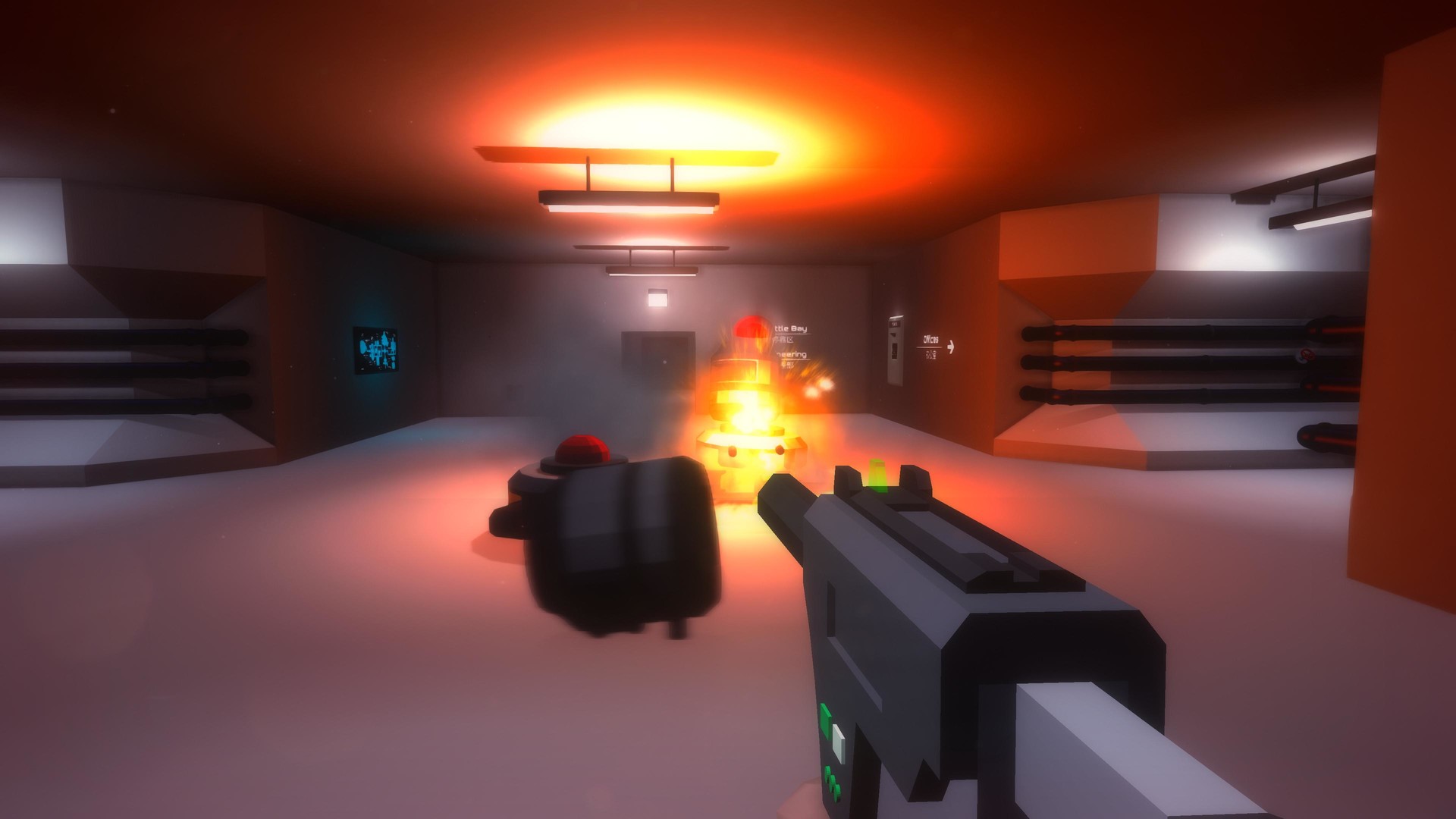
There are three possible endings to the game, though sadly none of them are very satisfactory. The first two involve restoring power to the ship and getting its navigational system back online to pilot it to its intended destination; either back to Earth, where the artifact’s influence could spread, or to a distant star which Zhao declared was the only way it could be destroyed. The blunt, quick resolutions provided by both of them never leave any real sense of accomplishment, hope or despair. The third hidden ending requires the player to locate several illusory masks scattered across the ship, similar to hunting for the coordinates of the star. This finale is yet another shout-out to 2001, but it lacks the gravitas and relevance of the Star Child scene and feels like it was just thrown in for the sake of having a weird, ambiguous conclusion.
Though some critics might dismiss this claim after looking at the game’s simple low-poly visual style, Spirits of Xanadu is a victim of trying too hard. Trivette and Williams had an impressive concept that, if refined a bit more, would have created a truly memorable, eerie experience. The execution was hindered by not fully fleshing out the concept of the player’s gradually fracturing mental state, drawing a bit too heavily from other media like System Shock, and an unnecessary combat system that ruins the mood just to make it feel like a more traditional video game. I want to see more from this duo in the future; I just hope their future titles will have a better focus on core aspects and trim the fat.



